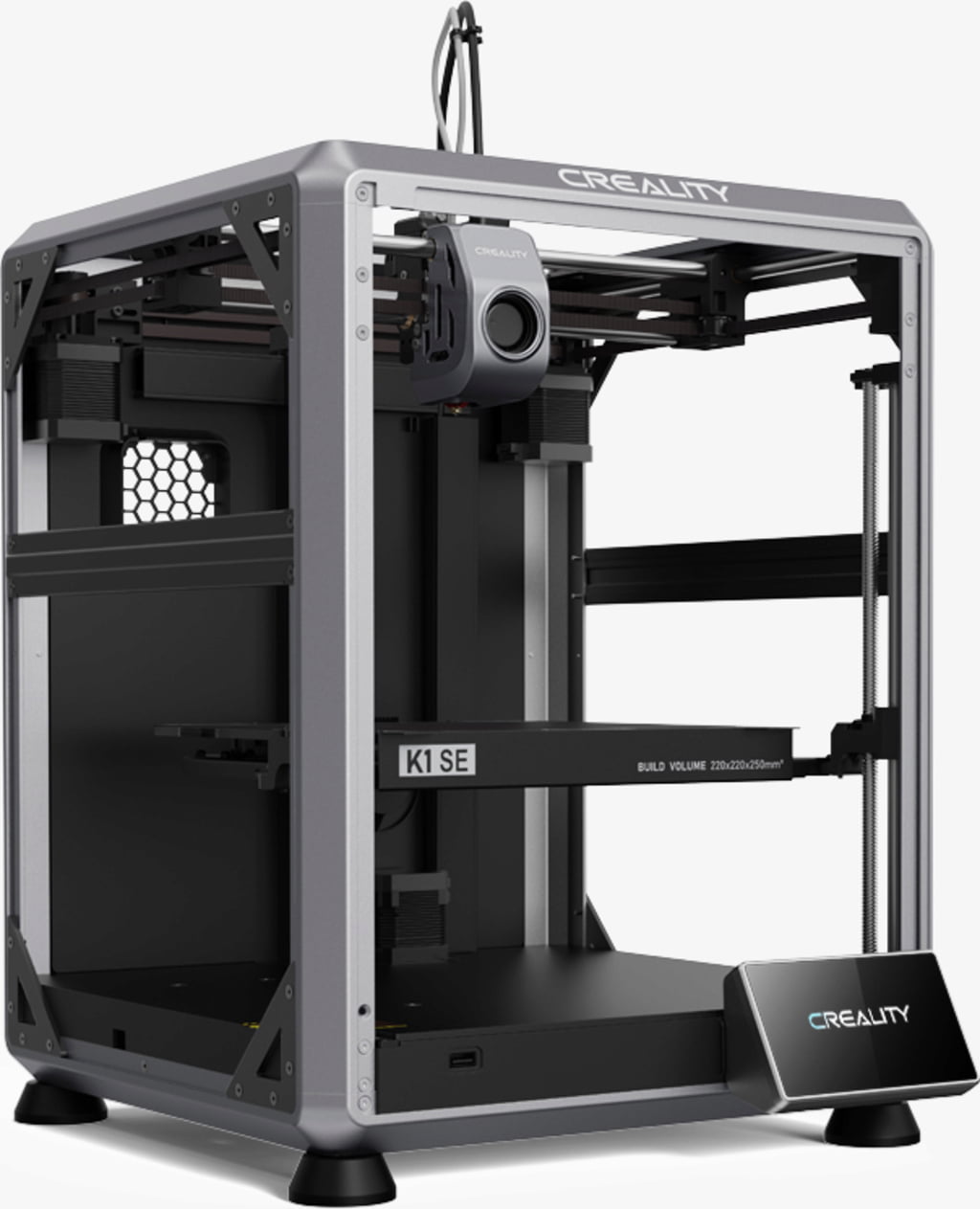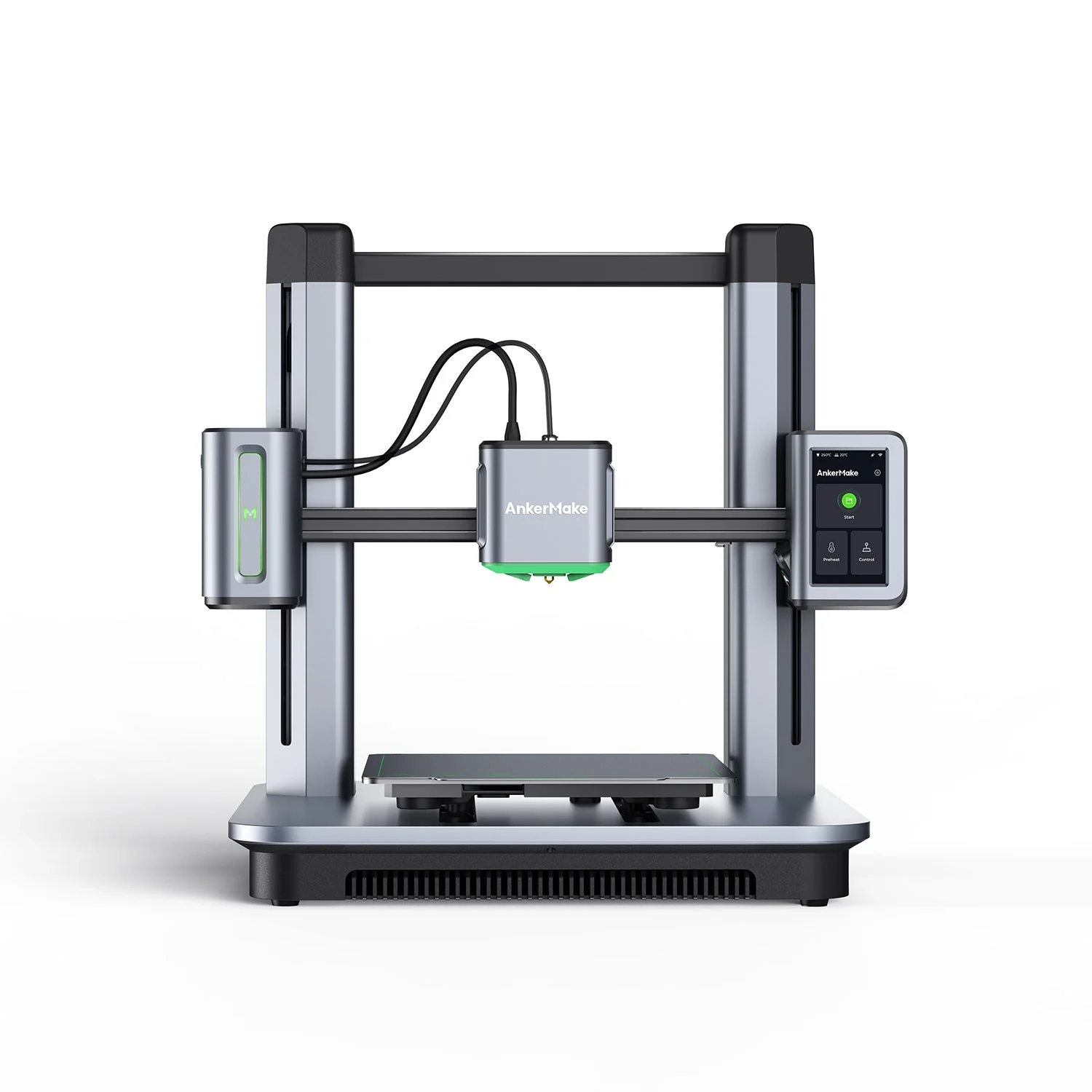Compare K1 SE vs M5
Comparison between the best 3D printers
Choose the best 3D printer at the best price. The cheapest 3D printers are here.
Buy a 3D printer here with 3D Fila.
 |
 |
|
| Model | K1 SE |
M5 |
| Printing Material | Filament | Filament |
| Buy Filament for Creality 3D K1 SE | Buy Filament forAnkerMake M5 | |
| Estimated price | $349,00 | $497,00 |
| Manufacturer | Creality 3D | AnkerMake |
| Release Year | 2023 | 2023 |
| Print Volume [mm] | 220x220x250 | 235x235x250 |
| Printer Size [mm] | 355x355x480 | 502x438x470 |
| Weight [kg] | 10,24 | 12,6 |
| Power Loss Recovery | YES | YES |
| Enclosed printer | NO | NO |
| Bed Leveling | Automatic | Automatic |
| Filament End Sensor | YES | YES |
| Bed type | Heated | Heated |
| Power supply system | Direct Drive | Direct Drive |
| Standard nozzle | 0,4 | 0,4 |
| Maximum Nozzle Temperature [°C] | 300 | 260 |
| Maximum Bed Temperature [°C] | 100 | 100 |
| Maximum printing speed [mm/s] | 600 | 500 |
| Filament holder | YES | YES |
| Camera for supervision | YES | YES |
| Recommended filaments | Hyper PLA, PLA, PETG, PET, TPU | PLA, PETG, ABS |
| Recommended slicers | Creality Print; Cura, Simplify3D e PrusaSlicer | AnkerMake Studio (macOS, Windows), Simplify3D, Ultimaker Cura, PrusaSlicer |
| Maximum Resolution [mm] | 0,1 | 0,1 |
| Processor | ||
| Display | Display touchscreen 4,3'' | Touchscreen 4,3'' |
| Power Supply | 110/220V / 350W | 350 W |
| Connectivity | Ethernet / USB / Wi-Fi | Wi-Fi, USB-C, OTA Upgrade |
| Operating systems | Windows, Mac, Linux | Windows, Linux, Macbook |
| Date of registration in the system | 2023-08-26 | 2024-07-08 |
| Release date | 2023 | 2023 |
| Extra features | The Creality K1 SE is a high-speed 3D printer with CoreXY system, capable of printing at up to 600mm/s with acceleration of 20000mm/s². It has a dual-gear extruder, easy-to-replace tri-metal nozzle, automatic leveling, and advanced features such as vibration reduction algorithms and intelligent operation. Its rigid cast aluminum frame ensures stability, while the open-source Klipper-based system offers freedom for customization. It is pre-assembled for a simplified and fast user experience. | The AnkerMake M5 printer stands out for its impressive print speed, reaching up to 500mm/s. It features AI print monitoring, an integrated camera for creating timelapses, auto-leveling bed with pressure sensor, direct extruder, flexible PEI-coated build plate, and Wi-Fi and USB-C connectivity. Assembly is quick and easy, and the printer is designed to deliver high print quality and ease of use. |
| Support for multiple colors and materials (AMS and CFS) | NO | NO |
Notes * |
||
| Cost-benefit | 7 / 10 | 7 / 10 |
| Hardware | 3.5 / 10 | 3.5 / 10 |
| Tela | . | . |
| Print volume | 3 / 10 | 3 / 10 |
| Performance | 5 / 10 | 4 / 10 |
Conclusion |
| In comparing the Creality 3D K1 SE and the AnkerMake M5, both printers exhibit similar foundational qualities, such as automatic bed leveling, power loss recovery, and connectivity options like USB and Wi-Fi. However, key differences emerge when weighing performance against price. The K1 SE, while priced lower, offers a higher maximum printing speed of 600mm/s and features a robust CoreXY system, making it suitable for users seeking rapid production without sacrificing quality. Its rigid construction and pre-assembled nature enhance user-friendliness, particularly for beginners or those who prioritize ease of setup and operation. On the other hand, the AnkerMake M5, although slightly more expensive, brings significant value through features like AI print monitoring and an integrated camera for timelapse creation. While its maximum speed is slightly lower at 500mm/s, it compensates with a flexible PEI-coated build plate and notably good print quality, appealing to users who prioritize detail and user experience. Ultimately, both models score equally on cost-benefit and overall performance, but the choice depends on the specific needs and preferences of the user. If budget and speed are primary considerations, the K1 SE stands out as the better option. However, for those inclined towards enhanced monitoring features and ease of use, the AnkerMake M5 may justify its higher price point. Thus, the ideal selection hinges on balancing the features against individual printing priorities and budget constraints. |

